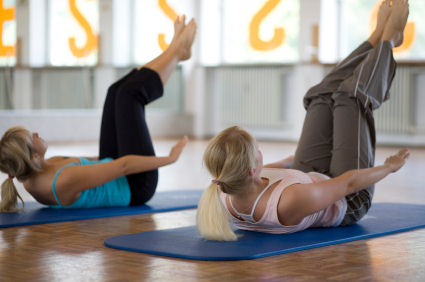As we travel farther away from the great intentions of the new year, some of us may be finding it harder and harder to stay motivated to continue with our exercise and particularly our practice of Pilates. Here in Australia, it's starting to cool down and with the recent time-change, its becoming much more inviting to curl up on the lounge with a good book, blanket and a warm bowl of food.
As Pilates instructors, we start to see some of the attendance taper off to regular classes and sessions, and although this can also often be a result of the winter "bugs" starting to rear their ugly heads, often it is a result of unfortunate excuses that prevent us from continuing our disciplined practice of Pilates.
Now before I delve in to some of these excuses, I want to explain that I am all in favour of taking it easy and taking care of yourself from time to time. I certainly believe that your body needs periods of rest and relaxation, where berating yourself for NOT exercising can be ineffective. So please, as you read this, keep in mind that my purpose is to keep you motivated, not guilty for allowing your body much needed rest.
Common Excuse #1 - I'm too busy to find the time to exercise.
When your life seems so busy and out of control, I beleive this is a key the time to
add practice to your schedule. Exercise and the practice of Pilates allows you to take time out and put things in perspective during this busy time. Exercise will also rejuvenate you and allow you to be more productive. Schedule your practice into your diary, and plan around it - you'll be amazed.
Common Excuse #2 - I'm feeling so out of shape and everyone else is so fit.
This is particularly applicable when you normally participate in a group class. Sadly, we can often be so competitive with our peers, without even realising it. Often you might have a bad day, or are feeling out of shape because you missed your last practice or two, and it seems we find that a good excuse NOT to exercise. Consider teaming up with a buddy, or talking to your instructor about your specific "problem areas" to get you motivated to take a proactive approach to your health.
Common Excuse #3 - I'm not overweight so I don't really "need" to exercise.
This, of course, is a big myth. Exercise is important part of whole body health. Pilates, specifically, is very beneficial for posture and alignment, core strength and is an excellent mental trainer as well.
Common Excuse #4 - I'll just do it tomorrow.
This can be fine every now and then, to keep your life in balance, but the problem starts to go sour when tomorrow's practice doesn't happen. Especially if you're attending a planned session or class, its important to develop your sense of self commitment by following through with your plans. A habit takes a long time to build, but can be broken very quickly - place priority on your plans and make them into habits that happen automatically.
Common Excuse #5 - Boredom - I'm not "feeling" it anymore, or we just do the same old thing all the time.
Boredom is a huge issue - not just mentally, but physically as well. To create a physical response in the body, we need to keep mixing it up - challenging our muscles in new and diverse ways. Try something different - attack your practice with a different focus, eg: abs, posture, flexibility, breathing. Ask your instructor to give you some more challenging exercises. If you're in a group class - push yourself to do a few extra reps while the rest of the class is resting. Try a different class with a different teacher. Try a whole different activity all together! Variety is the spice of life. Just because something worked for you for a while, doesn't mean it will always keep working - keep it fresh.
Common Excuse #6 - It's too expensive, I'll just do it on my own.
The cost of a scheduled session or class is minimal compared to the other "indulgences" we partake in regularly - a cup of coffee, take away food, a movie, etc. The benefits of participation in regular exercise to our health are priceless. The advantage of having a scheduled session or class with a qualified instructor means we are getting a quality workout, applicable advice, and are being continually motivated to continue in a healthy direction. When you spend your hard earned cash on participating in a class or session, you are not only financially committing yourself to something, you are investing in a remedy to all of the excuses listed above. You should also try to get as much value as you can out of your investment - capitalise on the resources of your studio or instructor - ask them questions, enquire about available information, utilise any programs or information sources they may offer.
I truly hope, that you are feeling slightly more motivated to continue your practice of Pilates. Most of all, leave your past excuses in the past and abolish any unnecessary feeling of guilt that have prevented you from investing in your health.
Kind Regards,
Natasha Debsieh
Practical Pilates
Pilates classes and Private Sessions in Wollongong and the St. George region of Sydney South.


